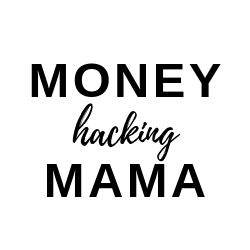Ready to uncover the transformative power of unplugging and reclaiming your time, focus, and well-being in just one week? Dive into the 7-Day Digital Detox Challenge.
The other day, I was sitting at the dinner table with my family, and I realized I wasn’t really there.
You see, I was physically present, but my mind was somewhere else—trapped within the glowing screen of my smartphone, scrolling through an endless feed of emails, social media updates, and news alerts.
I felt like I was caught in an ironic web— constantly connected, yet more disconnected from my life’s real, tangible moments.
I hit an all-time low when my daughter tugged at my sleeve, asking, “Mom, why do you always look at your phone?”
That simple, innocent question hit me like a thunderbolt. I realized I was missing out on the precious, fleeting moments before me— my kid’s laughter, the nuances of their day, and shared family time.
This epiphany marked the beginning of my journey towards mindfulness and the decision to undertake a much-needed digital detox.
In a world constantly buzzing with digital notifications, it’s easy to overlook the subtle but significant impact this has on our mental well-being. While seemingly harmless, the constant pings of our devices can erode our mindfulness—a state of active, open attention to the present.
The Downside of Digital Overload
Mindfulness expert Jon Kabat-Zinn defines mindfulness as “paying attention in a particular way: on purpose, in the present moment, and nonjudgmentally.” However, when we are glued to our screens, we are often anything but present. Research shows that excessive use of digital devices can lead to heightened stress, impaired sleep, and reduced attention span. Often, technology demands our attention only to scatter it.
Surprising Health Benefits of the Digital Detox Challenge
Embarking on the Digital Detox Challenge is not just about reducing screen time; it’s a journey toward discovering numerous, perhaps surprising, health benefits. Here’s what you can expect:
1. Enhanced Mental Clarity
Without the constant bombardment of digital stimuli, your mind gets a chance to rest and de-clutter. This mental break can lead to increased clarity, improved focus, and better decision-making abilities.
2. Improved Sleep Quality
Reducing exposure to blue light, especially before bedtime, can significantly improve your sleep quality. Better sleep not only leaves you feeling rested but also enhances your overall health.
3. Lowered Stress and Anxiety Levels
Constant connectivity can create a sense of being perpetually ‘on,’ leading to increased stress and anxiety. Disconnecting allows your mind to relax, reducing these negative emotional states.
4. Enhanced Relationships
By being present and engaging in face-to-face interactions without digital interruptions, you can foster deeper and more meaningful connections with those around you.
5. Boosted Creativity
Stepping away from digital devices can spark creativity. Free from distractions, your mind can wander, explore, and generate new ideas more freely.
6. Improved Physical Health
Less screen time often translates to more time for physical activities. Whether it’s a walk in the park or a yoga session, moving your body improves physical well-being.
7. Mindfulness and Self-Reflection
The Digital Detox Challenge encourages mindfulness and self-reflection, leading to a greater understanding of your needs, desires, and the world around you.
By embracing this challenge, you not only detox digitally but also embark on a holistic journey toward improved health and wellness.
Introducing the 7-Day Digital Detox Challenge
The “7-Day Digital Detox Challenge” is a structured yet flexible way to reduce digital dependency and improve mental health. This challenge isn’t about quitting cold turkey but creating a sustainable, mindful approach to our digital lives.
Digital Detox Challenge Day 1: Awareness
Task: Today is about observation and mindfulness. Pay attention to your digital habits. Notice when and why you reach for your phone or other digital devices. Are you checking your phone first thing in the morning? Do you feel restless or anxious when you’re away from your device? How often do digital distractions make it difficult to focus during conversations or tasks?
Strategy for Awareness:
- Journaling: Keep a small notebook or a digital notepad to jot down your observations. Note when you feel the urge to check your device and what triggers this urge.
- Mindfulness Moments: Whenever you reach for your device, take a brief moment to pause. Ask yourself, “Do I need to use it right now? What am I feeling at this moment?” This pause can help you become more conscious of your automatic behaviors.
- Set Intentional Breaks: Plan short, scheduled intervals when you will check your phone rather than doing so continuously. This helps in reducing impulsive behavior.
Device-free time: Aim for 2 hours of cumulative device-free time. This can be in blocks of time or spread throughout the day.
Digital Detox Challenge Day 2: Setting Boundaries
Task: Today’s focus is on establishing clear boundaries for your digital device usage, especially during meals. The goal is to create a space to enjoy your food and engage more fully with the people around you, free from digital distractions.
Strategies for Setting Boundaries:
- Mealtime Rules: Commit to having all meals without the interference of digital devices. Inform your family or housemates about this rule to foster a supportive environment.
- Physical Separation: Keep your phone in another room or on silent mode during meals. The physical distance reduces the temptation to check your device impulsively.
- Mindful Eating: Use mealtime as an opportunity to practice mindfulness. Pay attention to the flavors, textures, and aromas of your food. This practice not only enhances your dining experience but also helps in grounding you in the present moment.
- Engaging Conversations: Replace the time you would spend on your phone with meaningful conversations. Ask open-ended questions to spark discussions with your family or friends.
Device-free time: Increase your cumulative device-free time to 3 hours today. Try to include the meal periods within this time frame.
Reflection Activity: At the end of the day, reflect on how this change affected your meal experiences. Did you notice anything different about your interactions or your enjoyment of the food? Write down your observations and feelings.
Implementing these strategies on Day 2 will help set physical boundaries with your devices and encourage a more mindful, connected lifestyle. By consciously disconnecting digitally during meals, you’re taking a significant step towards reclaiming the richness of in-person interactions and the simple pleasures of life.
Digital Detox Challenge Day 3: Mindful Mornings
Task: Start your day without digital devices. Resist the urge to check your phone or emails for the first hour after waking up.
Strategies for Mindful Mornings:
- Morning Routine: Develop a morning ritual that doesn’t involve digital devices. This could be meditation, stretching, reading a book, or enjoying a quiet cup of coffee.
- Alarm Clock Alternative: If you use your phone as an alarm, consider switching to a traditional alarm clock to avoid the temptation of checking your phone right after waking up.
- Prepare the Night Before: If you need information from your phone in the morning (like weather or schedules), check these the night before.
Device-free time: Aim for 4 hours of cumulative device-free time, including the first hour after waking.
Reflection Activity: Note how a digital-free morning affects your mood and productivity throughout the day.
Digital Detox Challenge Day 4: Digital Minimalism
Task: Declutter your digital life. Unsubscribe from unnecessary notifications, emails, and apps.
Strategies for Digital Minimalism:
- Email and App Audit: Unsubscribe from emails you never read and delete apps you rarely use.
- Notification Settings: Turn off non-essential notifications. This reduces the number of times your device pulls your attention away.
- Essential Apps Only: Identify apps that truly add value to your life. Limit your usage to these essential apps.
Device-free time: Extend your device-free time to 5 hours today.
Reflection Activity: Reflect on how reducing digital clutter affects your stress levels and focus.
Digital Detox Challenge Day 5: Connect Offline
Task: Engage in activities that foster offline connections. Have a face-to-face conversation or participate in an outdoor activity.
Strategies for Offline Connection:
- Plan an Activity: Organize a walk, a coffee date, or a meal with someone.
- No Device Zones: Designate certain areas of your home as device-free zones, encouraging personal interactions.
- Hobbies and Interests: Spend time on a hobby or interest that doesn’t involve screens.
Device-free time: Aim for 6 hours without digital devices.
Reflection Activity: Observe how these offline interactions impact your relationships and personal satisfaction.
Digital Detox Challenge Day 6: Reflective Evening
Task: No digital devices for 2 hours before bed.
Strategies for Reflective Evenings:
- Relaxing Activities: Engage in relaxing activities like reading, journaling, or listening to music to wind down.
- Prepare for Tomorrow: Use this time to plan for the next day, which can help reduce stress and improve sleep quality.
- Sleep Hygiene: Create a bedtime routine that promotes good sleep hygiene, free from blue light exposure.
Device-free time: Target 7 hours of cumulative device-free time.
Reflection Activity: Notice any changes in your sleep quality and how you feel the following morning.
Digital Detox Challenge Day 7: Digital-Free Day
Task: Challenge yourself to a full day without digital devices.
Strategies for a Digital-Free Day:
- Plan Your Day: Have a plan to keep yourself engaged and avoid the temptation of using digital devices.
- Engage with Others: Spend quality time with family and friends or engage in community activities.
- Reflect and Relax: Use this time for personal reflection, relaxation, and mindfulness practices.
Device-free time: Aim for a full day without using digital devices.
Reflection Activity: At the end of the day, reflect on your experiences throughout the challenge and how being disconnected has impacted your life.
Overcoming Challenges
Embarking on a digital detox can be daunting, especially if you’re accustomed to constant connectivity. Here are some tips and tricks to make this journey smoother and more achievable:
1. Start Small and Be Patient
- Gradual Changes: If the suggested device-free times seem overwhelming, start with smaller intervals and gradually increase them.
- Patience: Remember that change takes time. Be patient with yourself if you slip up or find it challenging initially.
2. Create a Supportive Environment
- Inform Others: Let your friends, family, and colleagues know about your detox challenge. Their understanding and support can make a significant difference.
- Digital Detox Buddy: Consider partnering with someone who is also interested in a digital detox. Having a buddy can provide mutual encouragement and accountability.
3. Substitute with Positive Activities
- Fill the Void: Plan activities to fill the time you’d typically spend on your device. This could be reading, exercising, or engaging in a hobby.
- Mindfulness Practices: Incorporate mindfulness practices like meditation or yoga. These activities not only occupy your time but also enhance your mental well-being.
4. Manage Withdrawal Symptoms
- Acknowledge Feelings: Recognize feelings of restlessness or anxiety as withdrawal symptoms. Acknowledging them is the first step in managing them.
- Breathing Exercises: When you feel anxious without your device, try breathing exercises to calm your mind.
5. Designate Tech-Free Zones
- Create Boundaries: Establish areas in your home where digital devices are not allowed, like the dining room or bedroom.
- Tech-Free Times: Set specific times of the day as tech-free, such as during meals or an hour before bedtime.
6. Address Underlying Issues
- Reflect on Usage: Use this time to reflect on why you turn to digital devices. Is it out of habit, boredom, or to avoid certain feelings or situations?
- Professional Help: If you find that digital devices are a coping mechanism for underlying issues like stress or anxiety, consider seeking help from a mental health professional.
7. Celebrate Small Victories
- Acknowledge Progress: Every hour away from your device is a step forward. Celebrate these small victories to stay motivated.
- Reflect on Benefits: Regularly reflect on the positive changes you’re experiencing, whether improved sleep, better focus, or deeper connections with others.
Remember, the goal of the Digital Detox Challenge is not just to reduce screen time but to foster a healthier relationship with technology. It’s about finding balance and ensuring your digital habits align with your overall well-being and life goals.
Reflection and Moving Forward
The 7-Day Digital Detox Challenge is more than just a brief respite from the digital world. It’s a journey towards rediscovering the joys and benefits of living in the moment, enhancing personal connections, and cultivating a healthier relationship with technology.
As you navigate through each day of the challenge, from gaining awareness of your digital habits to embracing full days without digital intrusion, you’re reducing your screen time and opening up space for self-reflection, deeper connections, and enhanced mindfulness.
Remember, balance and intentionality are the keys to a successful digital detox. It’s about creating a sustainable lifestyle where technology serves you, not controls you. Embrace the challenges and celebrate your victories, no matter how small. Each step away from the screen is a step towards a more present, fulfilled, and mindful life.
As you conclude this challenge, reflect on the changes you’ve experienced. Have you noticed improvements in your sleep, attention span, or relationships? Are you more present during conversations and activities? These positive changes are the real rewards of your commitment.
Going forward, use the insights and habits formed during this challenge to maintain a mindful approach to technology. Set ongoing boundaries, engage in fun offline activities, and regularly check in with yourself on your digital consumption.
In a world where digital devices are an integral part of our lives, the goal isn’t to eliminate them completely but to use them in a way that enriches rather than detracts from our lives. The Digital Detox Challenge is your first step in this ongoing journey of digital mindfulness. Carry forward the lessons learned and strive for a balanced, mindful, and connected life.
Additional Resources
Want more information to help you prosper in all areas of your life? Check out my free weekly newsletter with juicy success hacks and awesome resources related to positive psychology, productivity, and personal finance delivered straight from my brain to yours.
You may also like:
- How to be Happier: New Research Reveals 5 Rituals That Will Make You Happy
- Millionaire Secrets: 5 Simple Money Hacks That Will Make You Wealthy (Over 25% of People Don’t Do #1)
The Friendly Agreement
If you found value in this article on how to increase productivity, please share it. It takes 10 seconds, and this post took me hours to write (and wouldn’t the world be a lot better if everyone was a little more productive?)
Disclosure: This post may contain affiliate links, meaning if you decide to purchase via my links, I may earn a commission at no additional cost to you. See my disclosure for more info.





